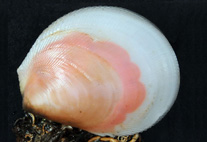Abstract
We describe the unknown advertisement call of three high Andean frog species endemic to Colombia: Niceforonia adenobrachia (Ardila-Robayo, Ruiz-Carranza & Barrera-Rodriguez, 1996), Pristimantis uranobates (Lynch, 1991), and P. simoterus (Lynch, 1980). Additionally, we report a new locality for N. adenobrachia. Advertisement calls were recorded during fieldwork conducted along the Cordillera Central in Departamento del Tolima, Colombia, between 2012 and 2013. Calls were recorded at 44.1 kHz sampling rate and 16 bits resolution with a unidirectional microphone (Rode) connected to a digital recorder (Marantz PMD 661 or Zoom H4N) at approximately 30–50 cm from the calling frogs. Microhabitat air temperature was measured at the time of recording with a portable digital thermometer. Digital copies of the calls (.wav format) are deposited at the Laboratory of Herpetology, University of Tolima, Ibagué, Colombia. Calls were analyzed with Raven Pro 1.4 for Windows (Bioacoustics Research Program, 2011) configured at 256 DFT size, 50% overlap, hop size 128 samples and grid spacing 188 Hz. Call terminology follows Bernal et al. (2004) and Dautel et al. (2011), although we report here the peak frequency (the frequency at which maximum power occurs within the call), and 5% and 95% frequencies (frequencies that contain 5% and 95% of the call energy, respectively). Measurements are given as mean, standard deviation, and range. Recorded animals were photographed, collected, fixed in 10% formalin and preserved in 70% ethanol. Voucher specimens are deposited at the Zoological Collection of the University of Tolima. A copy of the audio files were deposited at Fonoteca Zoologica (www.fonozoo.com) of the Museo Nacional de Ciencias Naturales, Madrid, Spain.

